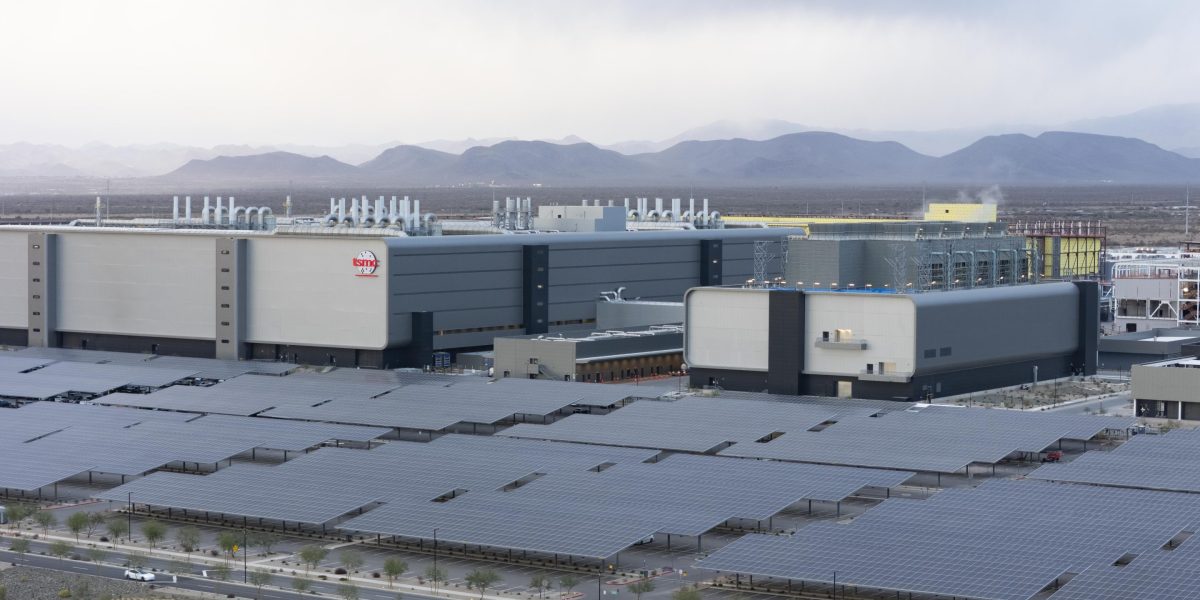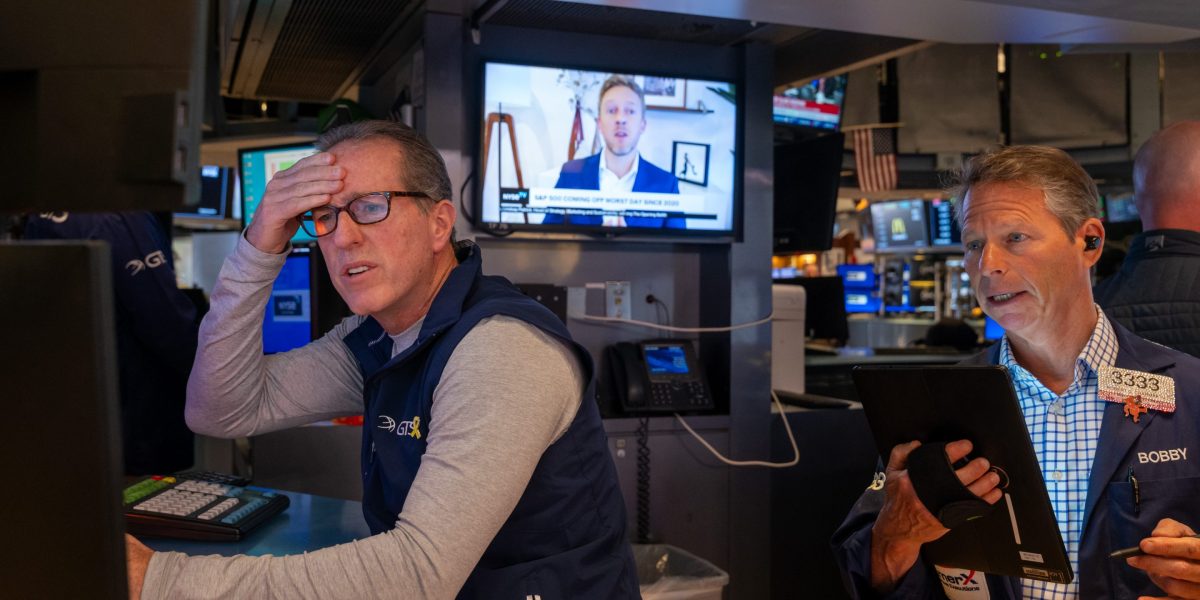The U.S. is heading into a workforce crisis—accelerated by AI, compounded by tariffs, and amplified by economic volatility.
The disruption is no longer theoretical: Tariffs are rattling markets, choking supply chains, and injecting uncertainty into investment decisions.
But beneath the headlines is a more foundational issue: America still hasn’t built the workforce it needs to withstand these shocks.
Artificial intelligence is reshaping white-collar work faster than expected. Junior analysts, paralegals, and customer service reps are being quietly replaced by algorithms that don’t sleep or take sick days. We once worried about robots on factory floors. Now it’s bots in offices—and there’s still no clear plan to upskill the next generation.
At the same time, a wave of federally backed investments is transforming the job landscape. The CHIPS and Science Act and Build Back Better infrastructure programs are generating thousands of new roles in clean energy, broadband, and semiconductor manufacturing. These aren’t theoretical jobs—they’re shovel-ready and funded through 2025 and beyond. But the talent pipeline hasn’t caught up. What was once a looming skills gap is now a daily operational challenge.
In Arizona, the $40 billion investment by Taiwan Semiconductor Manufacturing Company (TSMC) is expected to create thousands of high-paying jobs—but local community colleges are scrambling to spin up advanced manufacturing programs fast enough to meet demand. In Michigan, automakers transitioning to EV production are bumping up against shortages of battery tech specialists and software-savvy technicians—positions that didn’t exist in volume even five years ago. And, in North Carolina, where Apple and Toyota are building massive new campuses, employers are already expressing concern about the shortage of engineers, electricians, and fiber-optic specialists needed to sustain long-term growth.
Tariffs uncertainty
Ironically, tariffs designed to protect American manufacturing may be exposing its weakest link. Major employers rely on an ecosystem of small and midsize suppliers—machine shops, logistics firms, parts manufacturers—that are often less equipped to compete for talent.
Without the name recognition, salaries, or benefits of headline companies, these firms struggle to staff up. When they can’t, the whole supply chain stalls.
Add tariff-driven cost hikes and procurement uncertainty, and expansion plans start to falter just when they should be accelerating.
Take Ohio, where Intel is investing more than $20 billion in what it calls the “Silicon Heartland.” The company has made clear that without a robust pipeline of skilled tradespeople—welders, precision machinists, tool-and-die makers—none of the advanced fabs will function at capacity. Local training centers are working overtime, but demand is outpacing capacity. In Louisiana and Texas, where the energy sector is building out next-gen hydrogen and carbon capture facilities, employers can’t find enough instrumentation and control technicians—a job critical to safe plant operation, but one that few young workers even know exists.
Rethinking education
Meanwhile, the U.S. may be on the verge of transforming education policy as we know it. As calls to dismantle or decentralize the U.S. Department of Education grow louder, states are stepping into the spotlight. With 39 states now under single-party control—a modern record—governors have an opening for rethinking education from the ground up without many political speedbumps to slow their educational policy reforms.
This is more than political convenience. It’s strategic alignment. Education secretaries may focus on test scores, and their commerce counterparts on job creation. But they both report to the same boss: governors. The latter want wins they can tout, like landing major employers. That only happens when states can deliver a skilled labor force on demand. Education and economic development aren’t separate lanes—they’re the same highway. Governors are in a unique position to unify those efforts and innovate where Washington can’t.
Careers development that works
There are models worth studying. Switzerland, for instance, sends about two-thirds of high school students into vocational programs that combine classroom learning with apprenticeships. The result: low youth unemployment and a highly adaptable labor force.
In the U.S., scalable examples are emerging. In Pennsylvania, MedCerts has partnered with the University of Pittsburgh Medical Center to launch health-care career programs that blend online, skills-based training with on-site clinical experience. It’s fast, practical, and leads directly to jobs. In high schools across multiple states, MedCerts is also stepping in where traditional Career and Technical Education (CTE) programs fall short—especially in rural areas. Their model uses online curriculum and employer-led instruction to fill staffing gaps and create low-cost, scalable training pipelines.
Other localized programs are stepping up. In Georgia, the Technical College System has launched rapid credentialing programs aligned with regional employers in logistics and manufacturing. In California, high schools in the Central Valley are working directly with agri-tech companies to train students in drone operation and precision agriculture—responding to an aging farm workforce and rising tech needs.
This is what modern workforce development should look like: nimble, employer-connected, and outcomes-focused.
To compete globally, the U.S. needs to reimagine high school. Career and technical education (CTE) must be treated not as a fallback, but as a parallel path equal to college prep.
We also need better data. Today, most schools lose touch with students the moment their district email is deactivated. Without longitudinal tracking, we can’t measure impact—or improve what’s broken.
We’re at a critical junction. AI is disrupting jobs faster than policymakers can respond. Tariffs are destabilizing supply chains just as industries try to rebuild. And our education system is still preparing students for a labor market that no longer exists.
The solution isn’t top-down—it’s ground-up. State leaders, employers, and educators must collaborate to modernize workforce readiness—before the next disruption hits.
Programs like MedCerts and UPMC offer a blueprint. So do the workforce experiments happening in Arizona, Ohio, Georgia, and beyond.
Now it’s time to scale them—and treat workforce development not as a policy afterthought, but as a national priority.
The opinions expressed in Fortune.com commentary pieces are solely the views of their authors and do not necessarily reflect the opinions and beliefs of Fortune.
Read more:
This story was originally featured on Fortune.com
Source link


 Entertainment8 years ago
Entertainment8 years ago
 Politics8 years ago
Politics8 years ago
 Entertainment8 years ago
Entertainment8 years ago
 Entertainment8 years ago
Entertainment8 years ago
 Tech8 years ago
Tech8 years ago
 Tech8 years ago
Tech8 years ago
 Tech8 years ago
Tech8 years ago
 Politics8 years ago
Politics8 years ago






